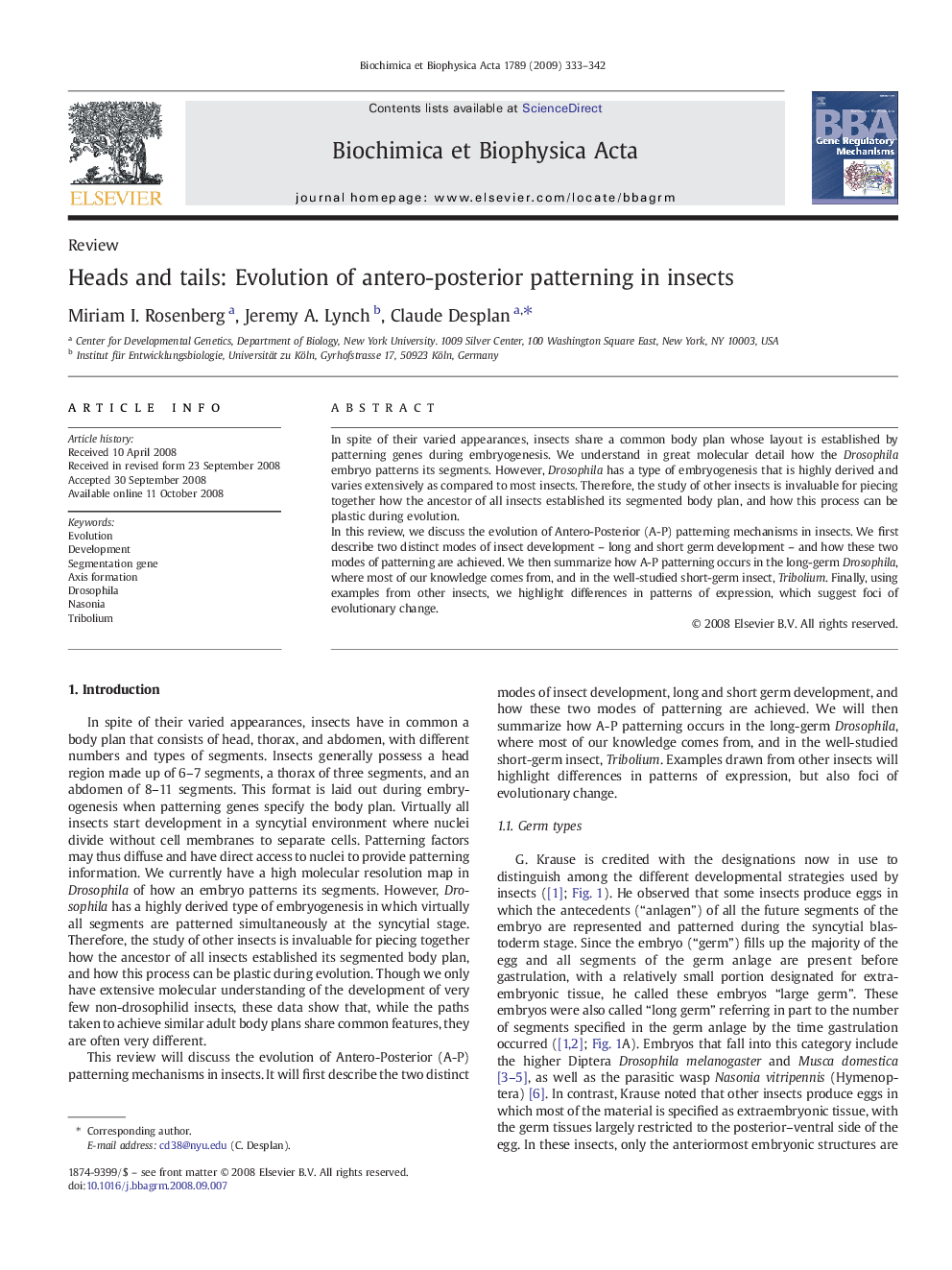| Article ID | Journal | Published Year | Pages | File Type |
|---|---|---|---|---|
| 1946940 | Biochimica et Biophysica Acta (BBA) - Gene Regulatory Mechanisms | 2009 | 10 Pages |
In spite of their varied appearances, insects share a common body plan whose layout is established by patterning genes during embryogenesis. We understand in great molecular detail how the Drosophila embryo patterns its segments. However, Drosophila has a type of embryogenesis that is highly derived and varies extensively as compared to most insects. Therefore, the study of other insects is invaluable for piecing together how the ancestor of all insects established its segmented body plan, and how this process can be plastic during evolution.In this review, we discuss the evolution of Antero-Posterior (A-P) patterning mechanisms in insects. We first describe two distinct modes of insect development – long and short germ development – and how these two modes of patterning are achieved. We then summarize how A-P patterning occurs in the long-germ Drosophila, where most of our knowledge comes from, and in the well-studied short-germ insect, Tribolium. Finally, using examples from other insects, we highlight differences in patterns of expression, which suggest foci of evolutionary change.
